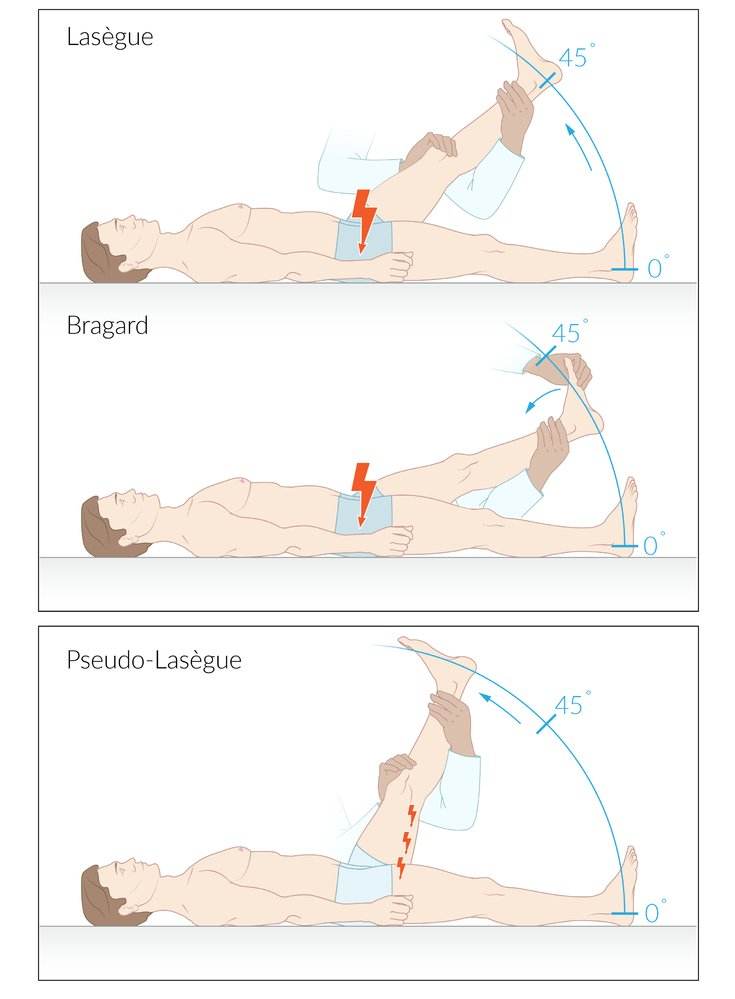Epidemiology
Etiology
Pathophysiology
Clinical features
- Axial Pain: Most common symptom. Localized, chronic, aching pain in the neck (cervical) or low back (lumbar).
- Typically worse with prolonged sitting, bending, or lifting.
- Often relieved by changing positions or lying down.
- Radiculopathy: Nerve root compression causing pain, paresthesia, or weakness in a specific dermatomal/myotomal distribution.
- Lumbar: Sciatica is common (L4-S1 radiculopathy). Provoked by a positive straight leg raise test.
- Cervical: Pain/numbness radiating into the shoulder, arm, or hand. Provoked by a positive Spurling’s test (reproducing symptoms by extending and rotating the neck toward the affected side).
- Myelopathy: Spinal cord compression (most common in the cervical spine). Presents with upper motor neuron (UMN) signs below the level of compression:
- Spasticity, hyperreflexia, positive Babinski sign.
- Gait instability, poor fine motor control in hands, and potential bowel/bladder dysfunction.
Lumbosacral radiculopathy
Provocative maneuvers for lumbosacral radiculopathy
Leg raising maneuvers are used to screen for lumbosacral radiculopathy
- Straight leg raise test (Lasegue sign): A straight leg raise leads to increased pain in the ipsilateral leg with radiation to the motor or sensory area of the affected nerve root.
- Pseudo-Lasègue sign (bottom): A straight leg raise produces an aching pain along the back of the leg (rather than typical radicular pain). This indicates that the pain likely originates from the hamstring muscles (usually occurs with the leg flexed to > 60º).
- Bragard sign: A straight leg raise leads to increased pain in the ipsilateral leg; lowering the leg to just below the level where pain is produced and pulling the foot to dorsiflexion reproduces the pain.
- Crossed straight leg raise test: A crossed straight leg raise leads to pain in the ipsilateral leg radiating to the motor and sensory area of the affected nerve root.
- Reverse straight leg raise test: A reverse straight leg raise leads to pain in the ipsilateral leg radiating to the motor and sensory area of the affected nerve root.
Diagnostics
Treatment
- Conservative (First-line for axial pain or mild radiculopathy):
- Physical therapy (core strengthening, range of motion exercises).
- NSAIDs and activity modification.
- Epidural steroid injections can provide temporary relief for severe radiculopathy.
- Surgical Intervention: Indicated for:
- Cauda equina syndrome or progressive myelopathy (surgical emergencies).
- Significant or progressive motor weakness.
- Intractable radicular pain unresponsive to >6 weeks of conservative therapy.
- Procedures include discectomy, laminectomy (decompression), and spinal fusion.